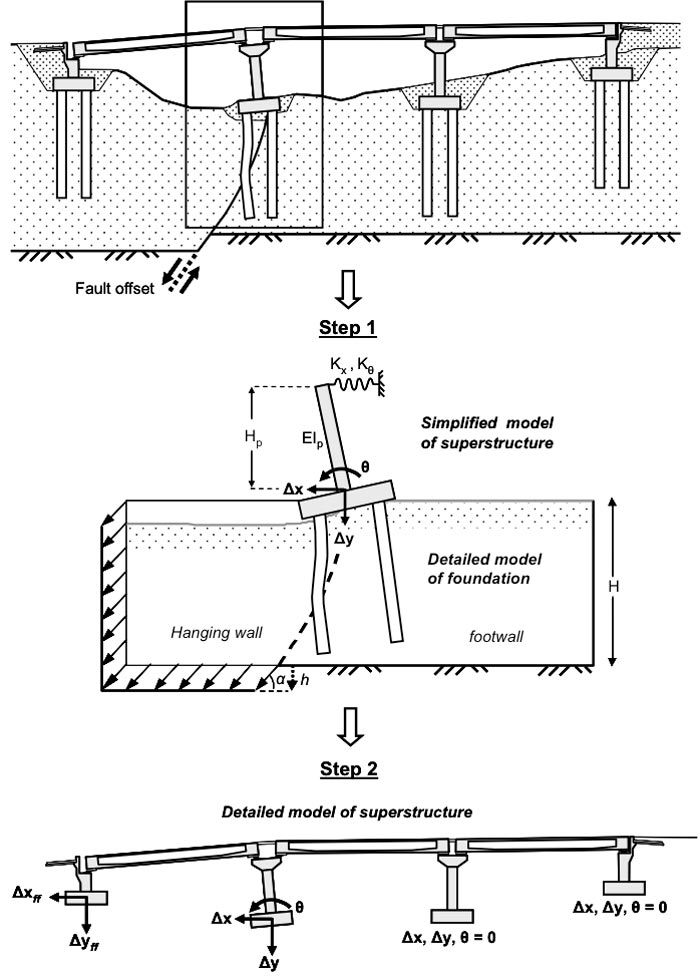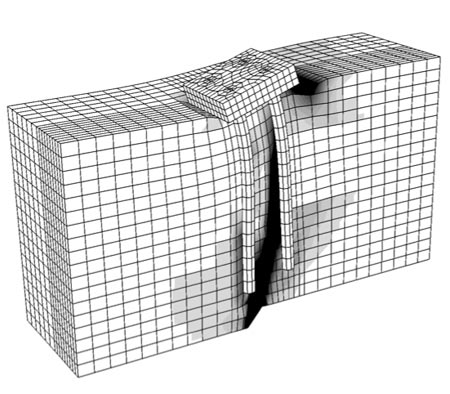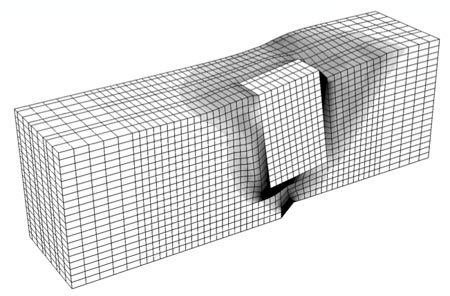Railway Bridges on Active Seismic Faults : Development of New Analysis Methodology–Investigation and Analysis of Mitigation Measures (2004-2006)
The scope of this project was to develop a fundamental methodology for the design of bridges against large faulting–induced deformation. A two-step analysis method was developed, in which the interaction between fault rupture, soil, foundation, and superstructure is rationally taken into account. In Step 1 (local level), the response of a single bridge pier subjected to fault rupture deformation is analyzed. A detailed model is employed for Fault Rupture Soil-Foundation-Structure interaction (FR-SFSI), with the superstructure modeled in a simplified manner. The bridge pier is included in the model, but the deck is replaced by equivalent lateral and rotational springs. The output of this step is dual: (i) it provides information regarding the distress of the foundation system (e.g. the internal forces in piles, in case of a piled foundation) ; (ii) it provides the necessary input for the second step: the horizontal and vertical displacements Δx and Δy and the rotation θ at the base of the pier. In the second step (global level), the detailed model of the superstructure is subjected to the computed Δx , Δy , and θ from Step 1. The developed analysis method was utilized to conduct a parametric study. Two generalized bridge types were selected for this purpose : (i) a typical 350 m long viaduct bridge, and (ii) a typical 75 m long 3-span overpass bridge. For each bridge type, alternative superstructure typologies were investigated, ranging from monolithic systems to seismic isolation. Representative foundation systems were parametrically investigated, ranging from pilegroups to caisson foundations. It was shown that fixed–head piled foundations are rather vulnerable to faulting–induced deformation. End–bearing piles in particular are unable to survive bedrock offsets exceeding 10 cm. Floating piles perform better; and if combined with hinged pile–to–cap connections, they could survive much larger offsets. Soil resilience is beneficial in reducing pile distress. While statically–indeterminate superstructures were found to be quite vulnerable, statically–determinate systems are rather insensitive In case of large–span cantilever–construction bridges, where a statically determinate system is hardly an option, inserting resilient seismic isolation bearings was found to be advantageous, as long as ample seating can prevent deck falling off the supports.



